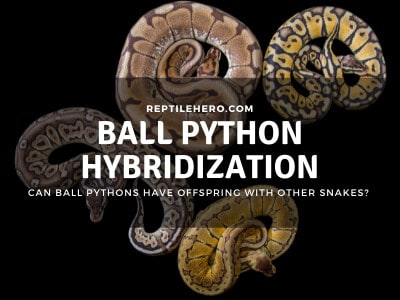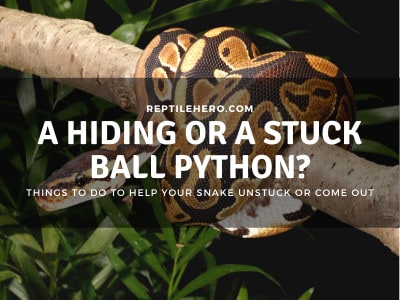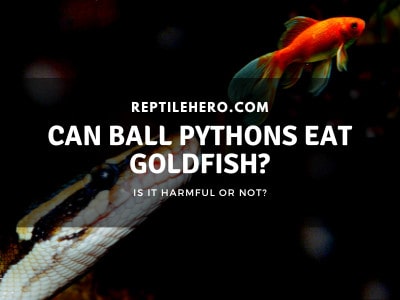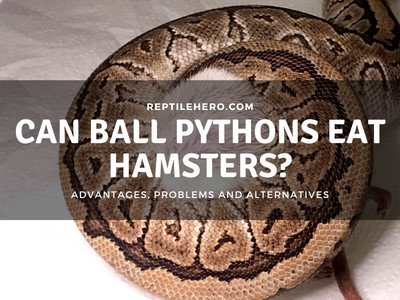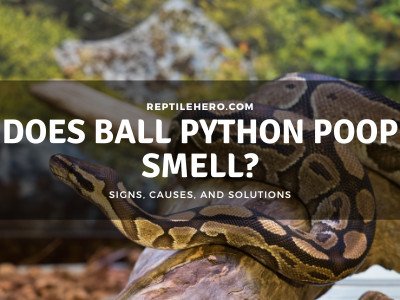3 Reasons Why You Should Use a Bioactive Setups For Your Ball Pythons
Have you recently seen a bioactive setup and wondered if it can work for ball pythons? Or are you just looking to upgrade the enclosure of your ball python? Either way, keepers should prioritize the safety and needs of their pets over the aesthetic look of an enclosure.
A bioactive setup is great for ball pythons because it is 1) enriching, 2) self-cleaning, and 3) interactive. Keepers that have successful bioactive setups express joy in having beautiful, naturalistic, and easy-to-maintain enclosures.
Ball pythons are often kept in simple, yet spacious enclosures. But can bioactive setups work for them? What are the pros and cons of keeping pythons in such a setup? What are the experiences of keepers who tried this? Read until the end to find out why you should or shouldn’t go bioactive for your ball python!
1. Enrichment Value
Bioactive setups give enrichment to ball pythons due to being more naturalistic and complex. With additions such as plants, deep substrate, and clutter, a ball python will feel more eager to explore and be more active.
So if you are planning to upgrade your ball python’s setup there is a high chance that you will see a change in your pet’s behavior.
Or rather, a new and improved environment will unlock the natural behavior and potential of your ball python.
Snakes situated in an enriching enclosure are more likely to recognize and interact with their owner in comparison to one kept in a barren setup [2].
You might see it burrow, climb, and display other behaviors that might seem unusual to keepers who keep their pythons in barren enclosures [1]. You might even notice it will become more curious towards you instead of being defensive or flighty.
Not only will your ball python be enriched, but this setup is beautiful as well which is a great centerpiece for your home!
>>Learn other enrichment tactics in our article ways of providing enrichment to ball pythons
2. Self-Cleaning Potential
When established, a bioactive enclosure will become a self-sustaining and hygienic environment for the ball python. This will only require replenishment of the substrate once a year.
Due to this feature, sanitation inside the enclosure will be beneficial to the snake because it mimics the natural cycle found in the wild.
It will also reduce the chance of your ball python becoming sick due to lesser stagnant air and better humidity maintenance because of the plants.
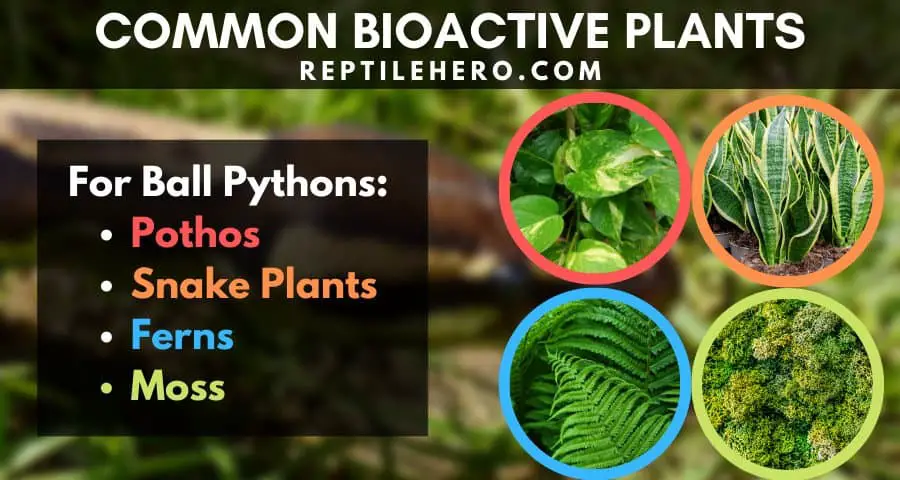
Additionally, with a well-established bioactive setup, your cleaning responsibilities will be lessened. Helpful bioactive microorganism in a clean-up crew like isopods that will take care of your snake’s solid wastes.
Meanwhile, some plants like snake plants, pothos, ferns, and some moss species will take care of all the liquid waste from your ball python.
Even though successful bioactive setups are self-cleaning, clean-up crews might not fully break down all the solid waste a big ball python produces. So frequent spot-cleaning is still recommended to prevent harmful mold growth.
3. Interactive Environment
A bioactive setup allows interaction between the inhabitants like the ball python, detrivores, and plants. For pythons, this can also be entertaining to see. This relationship will lead to better sanitation, air, and soil quality.
The great thing with bioactive enclosures is that you will see how the natural cycle works.
For instance, a ball python will release wastes like pee and poop, then the isopods will break down the solid waste while the liquid ones will be absorbed by plants.
Detrivores also aerate the soil by creating small tunnels that cause air to descend further down the substrate’s layer. This process aids plant growth and prevents water build-up underground.
One buddy of mine has a routine of just observing his python in its bioactive enclosure before going to sleep. He shared that the cycle mentioned above is noticeable to a certain degree, especially through isopods.
4 Disadvantages of Bioactive Enclosures for Ball Pythons
Bioactive setups for ball pythons can be disadvantageous for keepers because they are 1) expensive to make, 2) difficult to accomplish, 3) constant monitoring, and 4) the live plants are at risk of dying because of the snake.
1. Expensive to Build
The estimated cost for a bioactive setup is 200–400 dollars, and an additional 300–500 dollars for the enclosure. In total, an allotted budget of 500–800 dollars is needed for a ball python’s bioactive enclosure.
In general, here are a few items typically included for a bioactive setup shopping list:
| Item | Price (US Dollars) |
| Enclosure | 300–500 |
| Heat Lamp | 50 |
| Grow Light | 50 |
| Plants | 50–100 |
| Isopods | 20–50 |
| Springtails | 10–20 |
| Substrate | 50–100 |
| Other Provisions | 50–80 |
| Estimated Total | 500–800 |
Aside from these upfront costs, you might need to buy some of the materials again which will add up to the cost. This normally happens when you’re unable to get your bioactive enclosure to establish itself on your very first try.
Some keepers have even shared that they had to shell out a total of 1,000–1,500 dollars due to numerous tries and experiments to get the perfect bioactive setup.
2. Difficult to Accomplish
Bioactive setups are difficult to accomplish because the keeper will not only have to take care of the ball python but also other living organisms—like the plants and clean-up crew. One small mistake can lead to the death of the plants and clean-up crew.
That is why going bioactive is not recommended for beginner ball python keepers that have no experience in taking care of plants and detrivores like isopods and springtails.
For plants, a simple husbandry mistake is detrimental and can easily lead to its death. The same goes with isopods and springtail colonies which can be sensitive to stress and need a certain level of humidity depending on the species.
Setting up a bioactive enclosure is not as simple as just adding some plants to a substrate, then adding the isopods, and finally the snake.
The plants and isopods in a bioactive setup must be established first and cycled properly before even placing the snake inside. This process can take a few weeks, even months!
3. Constant Monitoring
For a bioactive setup to become established, constant monitoring of proper temperature and humidity levels is required. In addition to this, plant growth and the colonies of detrivores need to be maintained.
Even though you will be left with less ball python feces to clean, you now have the responsibility to make sure that the living organisms inside your bioactive tank will survive.
So you might even need to mist your enclosures regularly to maintain the humidity inside. In this case, foggers or humidifiers can come in handy in your reptile room.
Your chosen cleanup crew should also be monitored a few times a week. Monitoring should also be quick because stress can cause an isopod colony to diminish in quantity.
A good sign of a thriving isopod colony is the presence of “mancae” which is the term for baby isopods.
I knew a keeper who once left his bioactive enclosure alone for 2 weeks then went back and found all of the plants withered and his isopod colony gone. Turns out, the humidity levels have dropped but good thing his ball python survived and is well.
4. Plants are at Risk Due to the Snake
Ball pythons are medium-bodied snakes that can damage or even kill plants in a bioactive setup just by slithering on top of them.
I’m sure your ball python didn’t mean to kill your plant since it might just be trying to explore its awesome enclosure as much as possible. So please don’t be mad at it in case this happens.
This is also the reason why the plants inside a bioactive enclosure must establish their roots first before putting the python in. This will ensure they are properly anchored in case your snake does move on top of all the plants.
However, there are better more sturdy, and hardy plants that can handle medium-bodied snakes like ball pythons. Plants like snake plants and pothos are great for the ground area of the enclosure and can take a beating from a ball python pretty well.
You can also place the plants in the background to lessen the chance of the snake running them over.
Experience of Ball Python Keepers With Bioactive Setups
Ball python keepers have had both successful and unsuccessful experiences with a bioactive enclosure for their pets. Some expressed relief with a beautiful and easy-to-maintain setup. While others share frustration caused by many failed attempts.
Many keepers have shared that they noticed significant behavioral changes after they upgraded their pythons to a bioactive enclosure.
They observe their scaly pets climbing, burrowing, and even approaching them during maintenance more often in such a complex but naturalistic setup.
Most also share that they really enjoy observing and simply just admiring their ball python alongside the forest-like vivarium they have created.
But not all ball python owners have great stories about bioactive setups. Most negative experiences come from the hardships they encountered to get a successful setup.
One keeper shared that it took her over a grand and several tries to get her python’s setup just right. Even though it was successful in the end, she regretted many things like failed electronics and enclosures.
Another keeper shared that his bioactive setup only gave him more work because the isopods won’t break down the poop of his snake.
What Makes a Ball Python Setup Bioactive?
There are 3 main components to a bioactive ball python setup 1) plants, 2) detrivores, and 3) the snake itself. All of them are essential in creating a mini ecosystem that can clean and sustain itself.
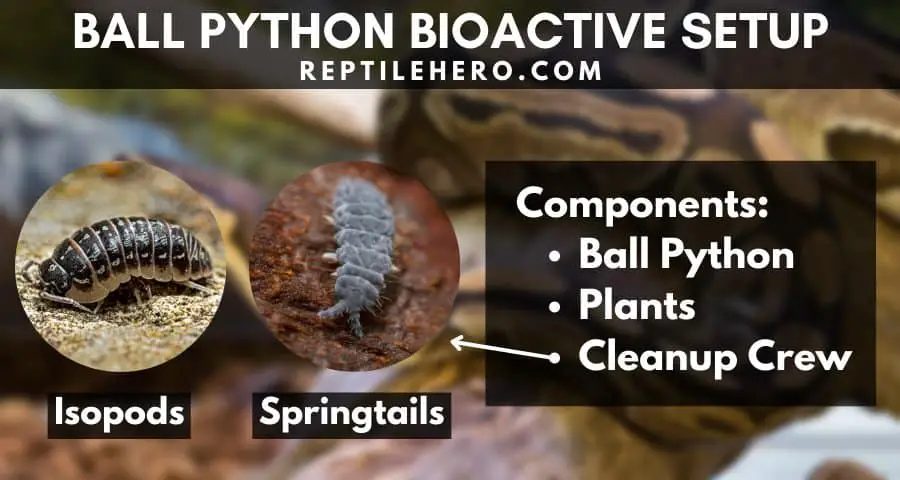
To put it simply, the snake will release wastes like urine, feces, and shedding which will be broken down by the detrivores or “clean-up crew” such as isopods and springtails.
These detrivores will then release their wastes which will be the main source of nutrients for plants.
Besides food, these living organisms also need light and heat. For the plants grow lights are needed, luckily heat lamps are required for ball pythons.
Despite their simple appearance, isopods can also get stressed due to bright lights and constant disturbance. To counteract this, make sure to provide ample hiding places for them like cork barks.
Further Questions
Can isopods bite a ball python?
Isopods will not bite a ball python and most isopod species’ defense mechanism is just rolling into a ball. Isopods will only eat decaying matter like dead leaves, waste, and sometimes even a snake’s shed skin.
What is the difference between a vivarium and a terrarium?
A vivarium is an enclosed area designed to raise an animal such as a ball python. Terrariums, on the other hand, are the same in function but are intended for only plants.
Summary of Pros of Bioactive Setups for Ball Pythons
Bioactive setups are recommended for ball pythons because they can be a great source of enrichment, can become self-cleaning, and provides an interactive environment that benefits all the inhabitants inside.
A bioactive setup is not recommended due to high expense, difficulty to accomplish, constant monitoring, and the plants can be destroyed by the ball python.
Based on ball python keepers, many have been successful and others unsuccessful on the first try with a bioactive setup but after large investments of money, time, and effort, they managed to make it work.

